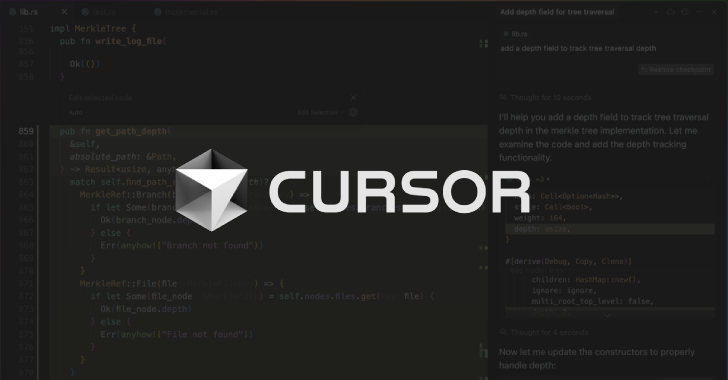
Things to Consider when Performing an IT Carveout, Mergers & Acquisitions Plan
Mergers and acquisitions (M&A) are complex corporate transactions that can have a profound impact on an organization’s structure, strategy, and operations. One critical aspect of M&A deals, particularly when separating a portion of a business from the parent company, is the IT carveout. An IT carveout involves disentangling the technology infrastructure and systems that are shared between the two entities. This process is intricate and fraught with challenges, but with careful planning and execution, it can be navigated successfully. In this article, we will explore the key considerations when performing an IT Carveout as part of an M&A Plan.
- Clearly Define the Objectives
Before embarking on an IT carveout, it’s crucial to have a clear understanding of the overarching objectives of the M&A deal. These objectives should guide every aspect of the IT carveout process. Are you seeking to divest a non-core business unit and make it a standalone entity? Or perhaps you’re acquiring a company and need to integrate its IT systems seamlessly into your own? Understanding the strategic goals will help you make informed decisions throughout the process. - Conduct a Thorough IT Assessment
A comprehensive IT assessment is a cornerstone of any successful IT carveout. This assessment should cover all IT-related aspects of the business, including hardware, software, data, networks, and personnel. It’s essential to identify all IT assets and dependencies that need to be transferred, discontinued, or replaced. Understanding the current state of IT infrastructure is crucial for planning the future state. - Identify Critical IT Dependencies
As part of the assessment, it’s vital to pinpoint any critical IT dependencies between the business units involved in the M&A. These dependencies could be related to shared software applications, data repositories, or integrated business processes. Understanding these dependencies is essential for determining how to disentangle the IT systems effectively. - Develop a Detailed IT Carveout Plan
Once you have a clear understanding of the IT landscape, develop a detailed IT carveout plan. This plan should outline the step-by-step process for separating the IT systems, including timelines, responsibilities, and milestones. Be prepared for the plan to evolve as new information emerges, but having a solid framework in place will help keep the process on track. - Assemble a Cross-Functional Team
A successful IT carveout requires collaboration across various functional areas, including IT, finance, legal, and operations. Assemble a cross-functional team with representatives from each of these areas to ensure that all aspects of the carveout are considered. This team should be responsible for executing the IT carveout plan and addressing any challenges that arise. - Address Data Privacy and Security
Data privacy and security are paramount in any IT carveout, especially in today’s regulatory environment. Ensure that all data is handled in compliance with relevant laws and regulations. This may involve transferring data securely, notifying data subjects of any changes, and implementing new security measures as needed. - Manage Vendor Relationships
If the IT systems rely on third-party vendors, it’s essential to manage those relationships effectively during the carveout. Assess existing vendor contracts, and determine whether any changes are necessary. Ensure that vendors are informed of the carveout and understand how it will impact their services to both entities. - Establish a Contingency Plan
Even with the best-laid plans, unexpected challenges can arise during an IT carveout. It’s essential to establish a contingency plan to address unforeseen issues. This plan should include procedures for resolving disputes, handling unexpected costs, and managing any disruptions to business operations. - Communicate Effectively
Clear and transparent communication is critical throughout the IT carveout process. Keep all stakeholders, including employees, customers, and suppliers, informed about the progress and impact of the carveout. Managing expectations and addressing concerns proactively can help reduce uncertainty and resistance to change. - Test and Validate the Carveout
Before fully implementing the IT carveout, it’s essential to test and validate the process. This can involve running pilot migrations, conducting system integration tests, and ensuring that all data is successfully transferred and accessible in the new environment. Thorough testing can help identify and address any issues before they disrupt business operations. - Train and Support Employees
Employee buy-in and support are critical to the success of an IT carveout. Provide training and support to employees who will be affected by the changes. Ensure that they understand the new IT systems and processes and have access to the resources they need to adapt to the changes seamlessly. - Monitor and Optimize Post-Carveout
The work doesn’t end once the IT carveout is complete. It’s essential to monitor the newly separated IT systems and continuously optimize them for efficiency and effectiveness. This may involve making further adjustments, addressing any lingering issues, and ensuring that the IT environment aligns with the strategic objectives of the M&A deal. - Seek Expert Guidance
Given the complexity of IT carveouts in M&A deals, it’s often advisable to seek expert guidance. Engage with IT consultants, legal experts, and financial advisors who specialize in M&A transactions. Their experience can be invaluable in navigating the intricate challenges that arise during the process.
Conclusion
Performing an IT carveout as part of an M&A plan is a complex and challenging endeavor. However, with careful planning, clear objectives, and the right team in place, it can be executed successfully. By conducting a thorough IT assessment, addressing critical dependencies, and developing a detailed carveout plan, organizations can minimize disruptions and ensure a smooth transition. Effective communication, data security, and ongoing monitoring are essential elements of a successful IT carveout strategy. With these considerations in mind, businesses can navigate the IT carveout process with confidence, ultimately achieving their strategic goals in the world of mergers and acquisitions.
Contact Cyber Defense Advisors to learn more about our Technology Careveout, Mergers & Acquisitions solutions.





